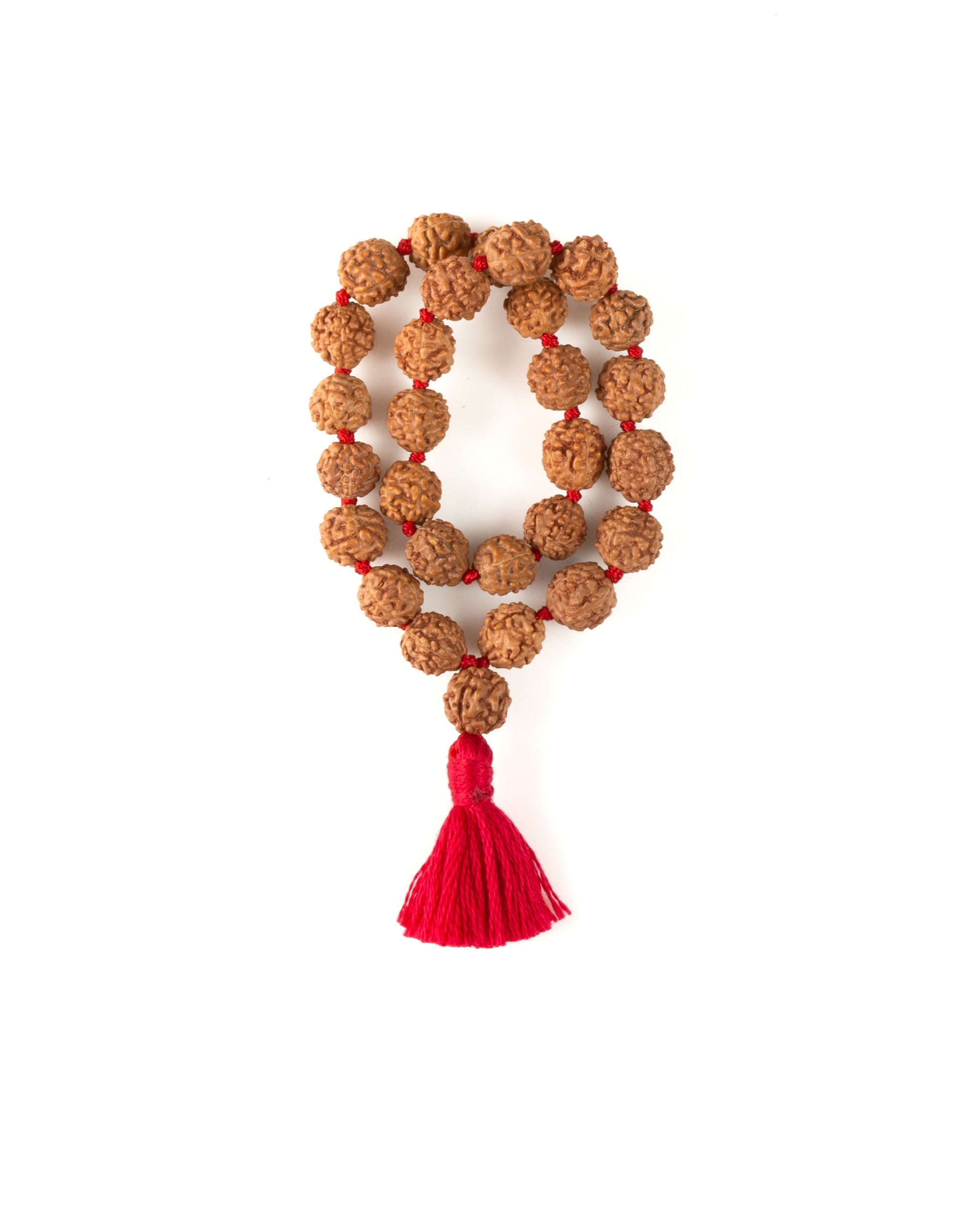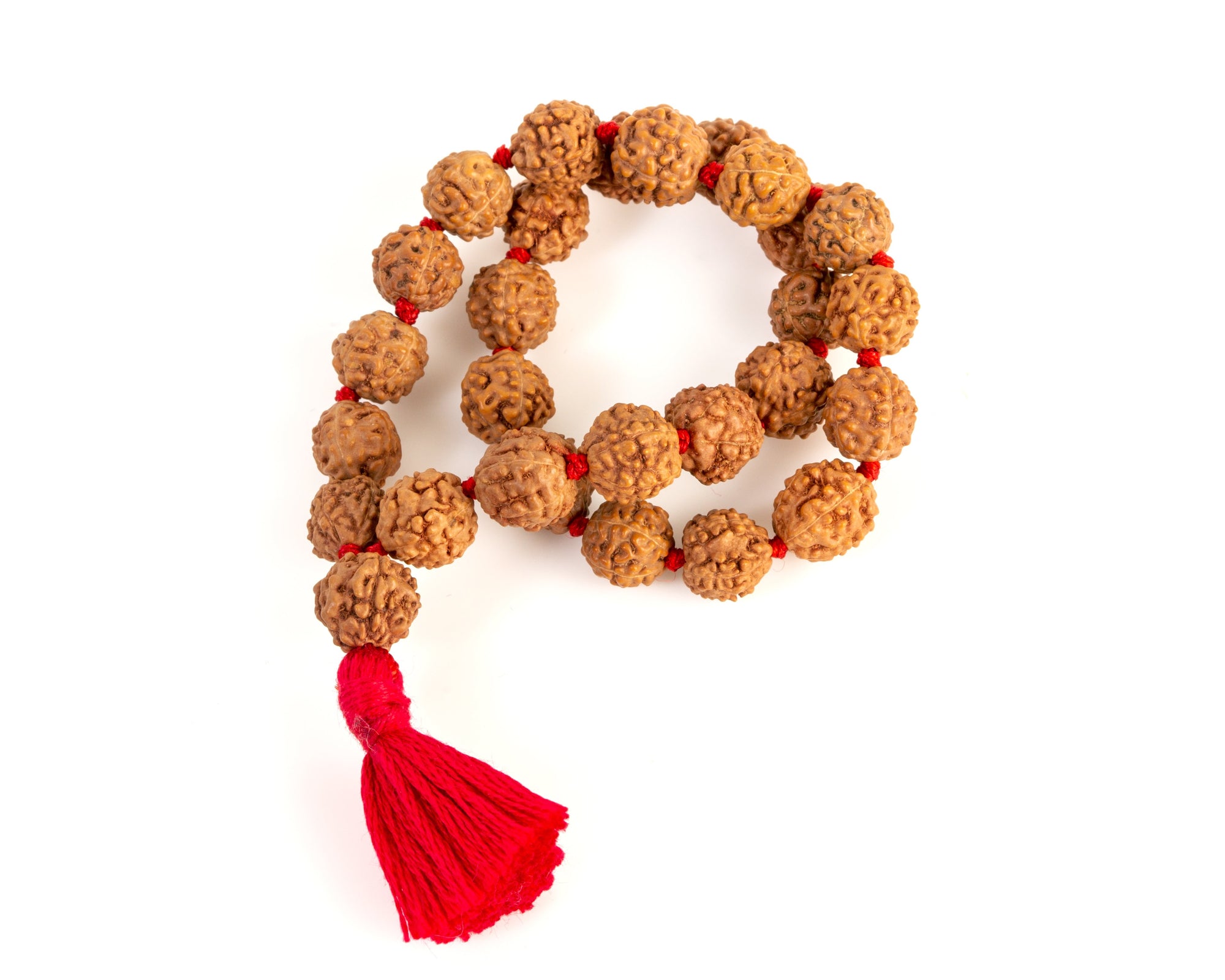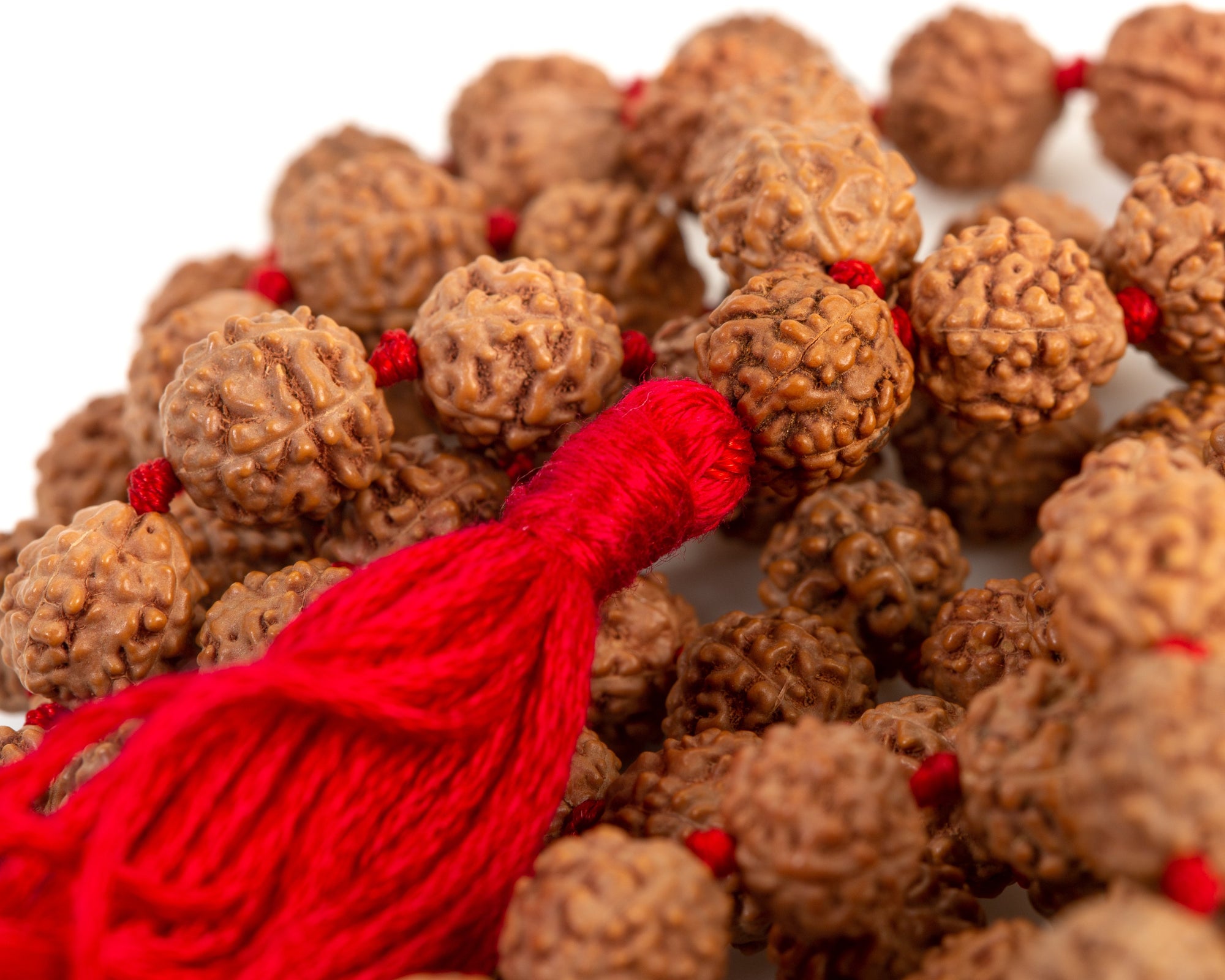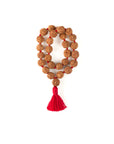
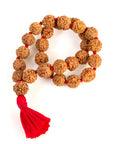
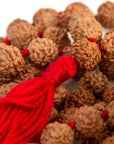
Rudraksha Mala (27 Beads + 1 Bindu)
$ 24.00 USD
Handcrafted Malas directly from India. Cotton string with 8mm beads. Auspicious number of 27 Beads + 1 Bindu.
Rudraksha is a seed belonging to the Elaeocarpus evergreen tree. Rudraksha literally means Eyes of Shiva, Shiva Eye. It is sometimes referred to as Tears of Shiva. Rudraksha beads are said to be good for purification and help shield against negative energy.
HOW TO USE A MALA
Ram Dass walks us through the basics.

What is a Mala?
A mala, is a string of beads. Used to chant the names of God. It’s the same thing as prayer beads. Or a rosary. A Hindu mala typically has either 108 or 27 beads. 108 being considered a sacred number in Hinduism. Likewise, 27 beads, which is one-fourth of 108. In addition to the 108 or 27 “counting beads,” a mala generally has an additional bead. Called the “guru bead.” Which hangs perpendicular to the circle of counting beads.
How to use a Mala
A Hindu mala is usually worked with by using the right hand. The mala is held resting over the third finger of the right hand, and the beads are brought toward you, one by one, using the thumb. Each bead counts one repetition of the mantra. When you get around to the guru bead, you don’t count it, and you don’t pass it; you stop there, mentally bow to the guru, flip the mala around, and start going back the other way. Each time you come to the guru bead you awaken once more, then you turn around and go back the way you came.
Which hand do I use my mala with?
Now for those of you who are left-handed (as I am): In India, you would be inclined to use the right hand anyway, because of certain cultural traditions. The Tibetans, on the other hand, have no such rules; they use their malas in either hand, and with any finger.
In the Hindu tradition, you can use any finger of the right hand to hold the beads, except for the first finger, which is the pointing or “accusing” finger; you don’t use that one. The reason most people use the third finger is that there is a nerve on the inside of that finger which is connected to your spine in such a way that you’re getting a little added benefit from the practice. It’s similar to an acupressure point, and it adds a little extra energy rush to the process.
Mala Adds Another Dimension to Your Practice
Doing a mantra doesn’t require using a mala; the mala is just there to add another dimension to the practice. Besides speaking the mantra, and hearing the mantra as you speak it, the process becomes tactile as well. If you want a psychological analysis of the use of a mala, you could say that it is a “kinesthetic cue device.” Without it, you could be doing the mantra and get lost in doing it mechanically. But if you suddenly feel the bead between your fingers, it wakes you up again. Bead by bead – it’s like the steps of a ladder, walking you straight into the Brahman.

